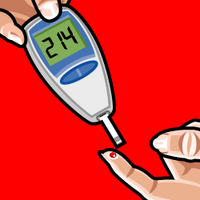Medical Devices & FDA Device Classification
by Zach Gostout, co-founder of Blueprint Health Inc
This post is going to get dense quickly, but, if you believe your product falls under the definition of a medical device here is a quick way to see if your suspicions are correct.
1) Brainstorm some close commercial comps to your product.
2) Plug the product names, company names, or whatever you have available into the fields in these two websites (the search fields are pretty good at turning up accurate answers off of minimal info):
Did anything come up? If so, your product will likely need to adhere to the same categories of governance as those products. If not, well you’re either developing something that isn’t regulated, is a Class I or II exempt device, or are headed towards the Class III/PMA land (because no predicate devices exist… keep reading.) If you suspect the first explanation to be true, pop some bubbly. If not, the below should be a great start. On to the dense stuff!
Classes of medical devices
If you believe your device falls within the FDA’s definition of a medical device, the next question you should be asking is will a 510k allowance or Premarket Approval (PMA)be required to allow use and distribution of your product.
Before we dig into that, we’ll need a quick backgrounder on the FDA’s three classes of medical devices:
Class I
Devices have minimal adverse effects in the event of failure. This includes products ranging from your toothbrush to surgical hand instruments. Think hemostats: if the hemostat breaks, some blood is lost, but it’s unlikely that anyone is going to die.
Class II—
Devices are those that have notable consequences in the event of failure and are very similar in function and/or application to devices already existing in the market. Technically you’re required to prove ‘sufficient’ similarity to receive a 510k if approval is applicable.
Think a glucometer: if the reading is inaccurate bad things are will happen but most likely everyone lives
Class III—
Devices that are implantable, have catastrophic consequences in the event of failure, and/or do not have comparable devices existing in the marketplace. Think a prosthetic heart valve: if it fails someone will likely die.
If a Class I classification is totally out of the question, you’re required to prove sufficient similarity to a device that was in use/approved prior to 1976 (yes it’s that nonsensical) or you’re automatically headed towards a Class III approval (PMA) even if you have the most benign product imaginable.
Technically you’re required to prove ‘sufficient’ similarity to receive a 510k if approval is applicable.
Need more information? Say no more:
- Best description of catagories of the categories as published by the FDA that I’ve found
- FDA’s page for helping you to determine your device’s category:
- Search for your device’s classification (Test it with something fun like ‘toothbrush’ and ‘scalpel’…scary but they’re equivalent in the FDA’s categorization system)
Now, what does this mean for you the product developer/producer? Well, in yet another hopefully illumining but moderately accurate summary here is a brief breakdown of the implications of your devices classification
Class I—In the world of medical devices a Class I categorization this is great news! It’s very likely[5] that neither a 510k nor PMA are required to market your device (meaning it’s exempt). In fact, 74% of Class I devices are exempt (no 510k necessary).
General Controls still apply. The device and your company need to be registered with the FDA. Good Manufacturing Practice (GMP) Regulations probably apply, but if you’re really lucky the device is also exempt from having to comply with these too. Try your luck on this one here by finding the appropriate category. If there is an asterisk next to your devices category you win!
Class II—Things start to become a drag, but they could be a lot worse. A 510k allowance (think “approval,” but that is technically incorrect) is, for all intensive purposes, required to market your product. There are a few Class II devices that are exempt from requiring a premarket notification,510k- more in this in the next post. The quality statues under the GMP regulations will regulate product design and distribution. Despite the mounting regulations, with a little patience things can proceed.
Class III—I’m sorry. How badly do you really want to do this? Is there nothing else you can do? All of the burdensome Class II requirements apply and the 510k is (usually) replaced by mandatory clinical trials to support the a Premarket Approval (PMA) process.
Miss the last post in the FDA & Medical Devices series? Check it out here.
Up next: What’s the deal with 510K and PMA?



